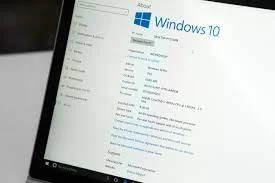Spice It Up: 7 Turmeric Benefits for Skin
Turmeric has been a staple in holistic medicine for 4,000 years, and its uses are far from the myths we hear about in the media. From an upset stomach, which may be mollified by ginger and banana, to stomping around town with a nasty case of the colds, and disinfecting wounds, turmeric was used to heal many ailments. However, people use this spice not just for internal health; it has been discovered to have numerous benefits when applied to the skin, from acne clearing, to sun-damaged skin brightening, and even helping brides get that glow for the wedding day. With such great qualities, this spice now ranks as one of the ultimate skincare's.
Although Ayurveda, the ancient Indian healing tradition, used turmeric for these exact benefits in the skin for thousands of years, it is only recently that the West has come to appreciate this spice and the vast benefits it has for the skin. Curcumin, extracted from the plant's root, is a compound which boasts extreme antioxidant, antibacterial, and anti-inflammatory properties. And now, more than ever, researchers and cosmetic manufacturers are unlocking turmeric in multiple ways to bring out its entire potential for skincare.
Here are seven amazing ways turmeric works well for your skin:
**1. Helps Treat Acne** Turmeric attacks acne from all sides. First, it dissolves clumping skin cells into pores, preventing them from clogging pores. Antiseptic and anti-bacterial properties also destroy bacteria responsible for acne. It has anti-inflammatory action which does not just help soothe the inflamed area, so healing is hastened.
**2. Reduces Hyperpigmentation**
The spice inhibits melanin synthesis-the dark pigmentation causing those pesky spots and blotchy tones. Skincare with turmeric consistently will gradually knock out those unsightly skin tones as those pesky spots fade away themselves.
**3. Fades out dull skin**
Inflamed, congested, or damaged skin tends to be dull and rather lifeless. Turmeric purifies, reduces inflammation, and shields against much damage, rejuvenating your skin to give you that radiant glow. It may also improve circulation, which leaves the complexion stronger and more resilient.
**4. Removes Dark Circles
Turmeric is a holistic treatment for dark under-eye circles since it's an all-round anti-inflammatory that makes your skin brighten and improve circulation. This multi-action agent would lighten and de-puff the delicate skin underneath the eyes.
**5. Protects against Environmental Damage**
Environmental stressors such as the sun and pollution cause free radicals on your skin. Turmeric happens to be an antioxidant, neutralizing bad molecules harming your skin cells, thereby allowing you to escape environmental damage.
**6. Prevents Premature Aging**
**7. Treats Psoriasis and Eczema
Turmeric can target root causes because it is known to have anti-inflammatory and antibacterial properties that can affect the overall skin conditions such as eczema. In addition, it might act against PhK-a protein associated with psoriasis, thus becoming a powerful drug against them.
How can turmeric not be regarded as one of the skincare superstars? Whether acne and inflammation have to be relieved, dark spots and dullness brightened, or aging has to be prevented, it can do anything! So give it a shot and let turmeric bring the radiant glow into your daily skincare routine.




















.jpg)













































